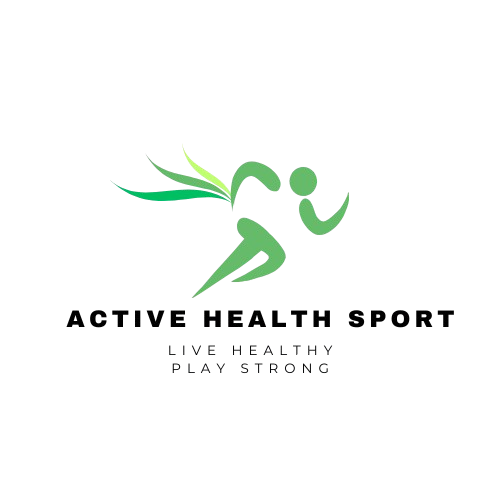Introduction | Why Cardiovascular Health Matters
Cardiovascular health is the foundation of a vibrant and active lifestyle, vital in maintaining overall well-being. A healthy cardiovascular system ensures efficient blood flow, delivering oxygen and nutrients to every cell in your body. Regular physical activity is one of the most effective ways to promote heart health, reducing the risk of conditions like hypertension, diabetes, and stroke.
Incorporating heart-healthy activities into your routine strengthens your heart, improves circulation, lowers stress levels, and boosts energy. While countless exercises can contribute to cardiovascular fitness, certain sports stand out due to their engaging nature and accessibility. These sports seamlessly blend physical activity with enjoyment, making it easier to sustain a consistent fitness habit.
In this blog, we’ll explore the top sports for cardiovascular health, uncover their specific benefits, and share actionable tips to help you integrate them into your lifestyle. Whether you’re a beginner or a seasoned fitness enthusiast, there’s something for everyone to enhance heart health and longevity through sports.
What Makes a Sport Heart-Healthy?
Heart-healthy sports are those that effectively challenge the cardiovascular system, enhancing its strength and endurance. These activities not only boost your heart rate but also improve overall circulation and oxygen delivery throughout the body. Here are the defining characteristics that make a sport especially beneficial for cardiovascular health:
- Aerobic Intensity
Heart-healthy sports emphasize continuous and rhythmic movements that maintain an elevated heart rate for extended periods. Activities like running, swimming, or cycling stimulate the cardiovascular system, improving heart and lung efficiency. Sustained aerobic activity ensures the heart is working optimally, helping to lower blood pressure and improve cholesterol levels. - Muscle Engagement
Engaging multiple muscle groups in a coordinated manner makes these sports effective for cardiovascular health. For instance, rowing activates both upper and lower body muscles, providing a comprehensive workout that strengthens the heart while toning the body. - Scalability and Flexibility
Heart-healthy sports allow for adjustments in intensity, making them suitable for all fitness levels. Beginners can start at a comfortable pace, while advanced individuals can push their limits. For example, tennis can be played casually or competitively, ensuring inclusivity and long-term participation. - Interval Training Potential
Many heart-healthy sports naturally incorporate interval training, alternating between bursts of high intensity and periods of moderate activity. - Consistency and Enjoyment
A key factor in the effectiveness of any sport is its sustainability. Heart-healthy sports are often enjoyable and social, increasing the likelihood of consistent participation. Whether it’s a game of doubles tennis or a group cycling session, the fun factor keeps you coming back for more.
Top Sports for Cardiovascular Health and Longevity
Maintaining a healthy heart is crucial for a long and active life, and engaging in cardiovascular sports is one of the most effective ways to achieve this. These activities not only improve heart health but also enhance endurance, burn calories, and reduce stress. From low-impact options to high-intensity workouts, there’s something for everyone.
Below, we explore some of the best sports for cardiovascular health, their unique benefits, and practical tips to get started.
1. Swimming: The Ultimate Full-Body Cardio
Swimming is one of the most comprehensive cardiovascular exercises, offering a low-impact way to work your entire body. Whether you’re gliding through laps at a pool or enjoying open-water swimming, this activity is suitable for people of all ages and fitness levels.
Benefits:
- Enhances heart and lung capacity, improving overall cardiovascular efficiency.
- Reduces joint strain, making it ideal for those with arthritis or mobility issues.
- Burns a significant number of calories, aiding in weight management.
How to Start:
- Join a nearby pool or community center offering swimming lessons or open swim sessions.
- Begin with basic strokes like freestyle or breaststroke for short intervals and gradually increase duration.
- Consider investing in quality swimming gear, such as goggles and a comfortable swimsuit, for a better experience.
2. Cycling: A Sustainable Cardio Workout
Cycling is a versatile activity that can be done outdoors or indoors on a stationary bike. It’s an eco-friendly way to stay fit and also doubles as a practical mode of transportation.
Benefits:
- Strengthens heart muscles and improves circulation, reducing the risk of heart disease.
- Builds lower body strength while enhancing endurance and stamina.
- Acts as a stress reliever and boosts mental well-being.
How to Start:
- Start with flat terrains for beginners and gradually introduce hills to increase intensity.
- Invest in a good-quality bike and essential safety gear like a helmet and reflective clothing.
- Join local cycling groups to make it a social and enjoyable activity.
Also Read the Latest: Why Hybrid Training Is the Future of (Strength & Cardio)
3. Tennis: A Dynamic Cardio Sport
Tennis is a fast-paced sport that combines quick movements with strategic play. The short bursts of energy required during a match provide an excellent cardiovascular workout.
Benefits:
- Increases heart rate with intermittent bursts of activity, enhancing aerobic and anaerobic fitness.
- Improves agility, coordination, and balance through dynamic movements.
- Provides a social outlet to bond with others, reducing stress and promoting mental health.
How to Start:
- Find a local tennis court and consider taking beginner lessons to learn basic techniques.
- Practice with a friend or join a recreational league to build skills while having fun.
- Use lightweight rackets and comfortable sports shoes to prevent injuries.
4. Running: The Classic Cardio Staple
Running is one of the simplest and most accessible forms of cardiovascular exercise. With minimal equipment and a bit of open space, you can reap significant heart-health benefits.
Benefits:
- Strengthens the heart by consistently elevating your heart rate during runs.
- Builds bone density and improves muscle tone, especially in the lower body.
- Requires minimal setup, just a quality pair of running shoes and a safe route.
How to Start:
- Start with short jogs or brisk walks and gradually increase distance and pace.
- Use fitness apps like Nike Run Club or Strava to track progress and set goals.
- Incorporate interval training to challenge yourself and prevent monotony.
5. Rowing: A High-Caliber Cardio Sport
Rowing is a comprehensive sport that provides both aerobic and strength-building benefits. Whether performed on water or a rowing machine, it delivers a powerful cardiovascular workout.
Benefits:
- Activates 85% of your muscles, including the core, arms, and legs, ensuring a full-body workout.
- Improves lung capacity and endurance, reducing the risk of chronic diseases.
- Low impact and gentle on joints, making it accessible to a wide range of fitness levels.

How to Start:
- Join a rowing club or gym that offers access to rowing machines.
- Focus on mastering proper rowing techniques to maximize efficiency and prevent injuries.
- Set achievable goals, like rowing for 20 minutes at a moderate pace, and build from there.
6. Basketball: Engage Your Heart and Mind
Basketball is a high-energy team sport that combines cardiovascular endurance with agility and strategic thinking.
Benefits:
- Elevates heart rate with quick sprints and dynamic movements, improving cardiovascular health.
- Enhances coordination, reflexes, and overall athletic performance.
- Provides a fun, community-focused environment that encourages teamwork and camaraderie.
How to Start:
- Look for local leagues or recreational teams that welcome players of all skill levels.
- Practice shooting, dribbling, and passing to build confidence and improve your game.
- Invest in proper footwear to support quick lateral movements and jumps.
7. Hiking: Cardio in Nature
Hiking combines the physical benefits of cardiovascular exercise with the mental rejuvenation of spending time in nature.
Benefits:
- Strengthens the heart by maintaining a steady aerobic pace on varied terrains.
- Reduces stress and anxiety through exposure to natural surroundings.
- Works multiple muscle groups, including the legs, core, and stabilizers, for a well-rounded workout.
How to Start:
- Research beginner-friendly hiking trails in your area, focusing on shorter routes with moderate elevation.
- Wear sturdy hiking boots and pack essentials like water, snacks, and a first-aid kit.
- Gradually increase trail difficulty as your fitness level improves.
Also Read the Latest: How Strength Training Boosts Longevity & Overall Health ✅
8. Dancing: Fun and Effective Cardio
Dancing is a joyful way to get moving while improving your heart health. From Zumba to salsa, it’s an expressive activity that combines fitness with creativity.
Benefits:
- Elevates heart rate through rhythmic and sustained movement, boosting cardiovascular endurance.
- Improves balance, coordination, and flexibility, reducing the risk of injuries.
- Offers a social and emotional outlet, lifting your mood and relieving stress.
How to Start:
- Join a local dance class that aligns with your interests, such as ballroom, hip-hop, or jazz.
- Practice at home with online tutorials or dance fitness videos.
- Invite friends or family to join for added fun and motivation.
9. Soccer: A Team-Based Cardio Powerhouse
Soccer is a globally popular sport that combines running, sprinting, and strategic teamwork, making it a top choice for cardiovascular fitness.
Benefits:
- Boosts cardiovascular endurance with continuous movement during matches.
- Enhances agility, coordination, and teamwork skills through dynamic play.
- Burns significant calories, helping with weight management and overall fitness.
How to Start:
- Join a local recreational league or find casual pickup games in your area.
- Focus on mastering basic soccer skills, such as dribbling, passing, and shooting.
- Invest in quality soccer cleats and shin guards for safety and performance.

How to Make Heart-Healthy Sports a Part of Your Life?
Incorporating heart-healthy sports into your routine doesn’t have to be overwhelming. With a thoughtful approach, you can make these activities a sustainable and enjoyable part of your lifestyle. Here are practical tips to get started and stay on track:
1. Ease into It
It’s important to start with manageable goals, especially if you’re new to exercise or trying a sport for the first time. Jumping into high-intensity activities can lead to fatigue, injuries, or burnout. Begin with low-impact options like swimming or walking, gradually increasing the intensity and duration as your fitness improves.
- Start with 10–15 minutes of activity and add 5 minutes each week.
- Focus on proper form to build a solid foundation and prevent injuries.
- Celebrate small milestones, such as completing your first mile or mastering a new skill.
2. Make Consistency Your Priority
Consistency is key to reaping the benefits of cardiovascular sports. Instead of overloading one or two days, aim for regular, moderate activity spread throughout the week.
- Follow the American Heart Association’s recommendation of at least 150 minutes of moderate-intensity exercise per week.
- Create a weekly schedule with specific days and times dedicated to your chosen sport.
- Use reminders or apps to track your workouts and maintain accountability.
3. Add Variety to Keep It Interesting
Sticking to one activity might get monotonous over time. Mixing up your routine not only keeps you engaged but also challenges different muscle groups, improving overall fitness.
- Alternate between sports like running, cycling, and swimming to target various muscles and boost endurance.
- Incorporate seasonal activities like skiing in winter or paddleboarding in summer.
- Join local events, leagues, or clubs to explore new activities and meet like-minded individuals.
4. Pay Attention to Your Body’s Signals
Listening to your body is crucial for maintaining long-term health and avoiding setbacks. Overexertion can lead to injuries or exhaustion while ignoring signs of fatigue can lower your motivation.
- Rest on days when you feel overly tired or sore. Recovery is just as important as the workout itself.
- Stay hydrated before, during, and after physical activity to support optimal performance.
- Consult a doctor or fitness professional if you experience persistent pain or discomfort during exercise.
5. Set Realistic and Inspiring Goals
Goals can motivate you to stay active, but they should be realistic and tailored to your abilities. Achieving smaller, incremental goals builds confidence and keeps you motivated for long-term success.
- Start with goals like running a mile without stopping or playing a full tennis match.
- Gradually aim for more challenging milestones, such as participating in a local race or joining a competitive league.
- Track your progress and reward yourself for reaching key achievements.
6. Create a Supportive Environment
Having a support system can make all the difference in staying committed to a fitness routine. Surround yourself with people who encourage and inspire you.
- Work out with friends, family, or coworkers to make activities more enjoyable.
- Join sports clubs, group classes, or online communities for extra motivation and camaraderie.
- Share your fitness journey on social media or with a close circle to stay accountable.
7. Focus on Fun and Enjoyment
Physical activity doesn’t have to feel like a chore. Choose sports that genuinely excite you, and make your sessions enjoyable by adding elements of fun.
- Listen to upbeat music or podcasts while cycling or running.
- Explore new hiking trails or scenic routes to keep outdoor workouts interesting.
- Turn workouts into family activities by including your kids or pets in the fun.
Over time, these activities will not only improve your physical health but also enhance your mental well-being and quality of life. Stay consistent, enjoy the journey, and let your heart lead the way!
Final Thoughts | Make Cardiovascular Health a Priority
Engaging in heart-healthy sports is more than just a fitness routine, it’s a commitment to your long-term well-being. These activities not only strengthen your heart and improve your physical health but also provide mental clarity, reduce stress, and add joy to your daily life. Whether it’s the calming strokes of swimming, the fast-paced energy of basketball, or the rejuvenating hike through nature, there’s a sport that can fit seamlessly into your lifestyle.
At Active Health Sport, we believe that the journey to a healthier heart starts with small, consistent steps. Explore the sports that resonate with you, set realistic goals, and allow yourself the time to grow and improve. Remember, it’s not about being the best; it’s about showing up for yourself and prioritizing your health.
Celebrate each milestone, no matter how small, and embrace the journey toward a stronger heart and a longer, healthier life. Your heart deserves the care and attention that heart-healthy sports can bring. So, find an activity you love, make it part of your routine, and watch as your energy, resilience, and happiness soar. Here’s to a lifetime of fitness, adventure, and vibrant health!
And that’s all from today’s informative blog, folks! If you have any questions or have any queries in your mind, feel free to comment below or email us.
You might also like…
- Active Recovery for CrossFitters: Walking & Mobility Explained
 CrossFit pushes athletes to their physical limits, lifting heavy, sprinting, jumping, and performing high-intensity functional movements. While the intensity delivers impressive gains, it also places tremendous… Read more: Active Recovery for CrossFitters: Walking & Mobility Explained
CrossFit pushes athletes to their physical limits, lifting heavy, sprinting, jumping, and performing high-intensity functional movements. While the intensity delivers impressive gains, it also places tremendous… Read more: Active Recovery for CrossFitters: Walking & Mobility Explained - How Walking and Stretching Boost CrossFit Recovery (Duo)
 CrossFit recovery, athletes often chase intensity, heavy lifts, quick transitions, and heart-racing WODs (Workouts of the Day). Yet, the key to consistent progress isn’t just in… Read more: How Walking and Stretching Boost CrossFit Recovery (Duo)
CrossFit recovery, athletes often chase intensity, heavy lifts, quick transitions, and heart-racing WODs (Workouts of the Day). Yet, the key to consistent progress isn’t just in… Read more: How Walking and Stretching Boost CrossFit Recovery (Duo) - How Nutrition Impacts Sleep: Foods That Help (and Hurt) Your Night’s Rest
 You Are What – and When – You Eat We often think of sleep as a nighttime habit, but the truth is that good sleep begins… Read more: How Nutrition Impacts Sleep: Foods That Help (and Hurt) Your Night’s Rest
You Are What – and When – You Eat We often think of sleep as a nighttime habit, but the truth is that good sleep begins… Read more: How Nutrition Impacts Sleep: Foods That Help (and Hurt) Your Night’s Rest - Why a Digital Detox Before Bed Can Fix Your Sleep Faster
 The Modern Sleep Thief Hiding in Your Hand In a world where we check our phones hundreds of times a day, it’s no surprise our sleep… Read more: Why a Digital Detox Before Bed Can Fix Your Sleep Faster
The Modern Sleep Thief Hiding in Your Hand In a world where we check our phones hundreds of times a day, it’s no surprise our sleep… Read more: Why a Digital Detox Before Bed Can Fix Your Sleep Faster - How to Align Your Circadian Rhythm for All-Day Energy Gains
 Why You Feel Tired Even After Sleeping Enough Have you ever slept for eight hours and still felt groggy the next morning?The issue might not be… Read more: How to Align Your Circadian Rhythm for All-Day Energy Gains
Why You Feel Tired Even After Sleeping Enough Have you ever slept for eight hours and still felt groggy the next morning?The issue might not be… Read more: How to Align Your Circadian Rhythm for All-Day Energy Gains - Electrolytes vs. Water: What Active Adults Must Know
 Beyond Water, The Hidden Key to True Hydration Most adults know the rule, “Drink more water.”But few realize that hydration isn’t just about fluid intake. It’s… Read more: Electrolytes vs. Water: What Active Adults Must Know
Beyond Water, The Hidden Key to True Hydration Most adults know the rule, “Drink more water.”But few realize that hydration isn’t just about fluid intake. It’s… Read more: Electrolytes vs. Water: What Active Adults Must Know

Kait Amazra is the founder and lead writer of Active Health Sport. With over 25 years of experience in health, fitness, and wellness education, Kait combines professional expertise with a passion for helping people live stronger, healthier, and more balanced lives.
As a licensed health and fitness professional, Kait has worked alongside industry experts to deliver evidence-based insights on physical activity, nutrition, recovery, and holistic well-being. Through Active Health Sport, Kait’s mission is to make trusted, practical, and science-backed health information accessible to everyone, from beginners building new habits to athletes seeking peak performance.


Your article helped me a lot, is there any more related content? Thanks!
Your article helped me a lot, Thanks!
Your article helped me a lot, Thanks!